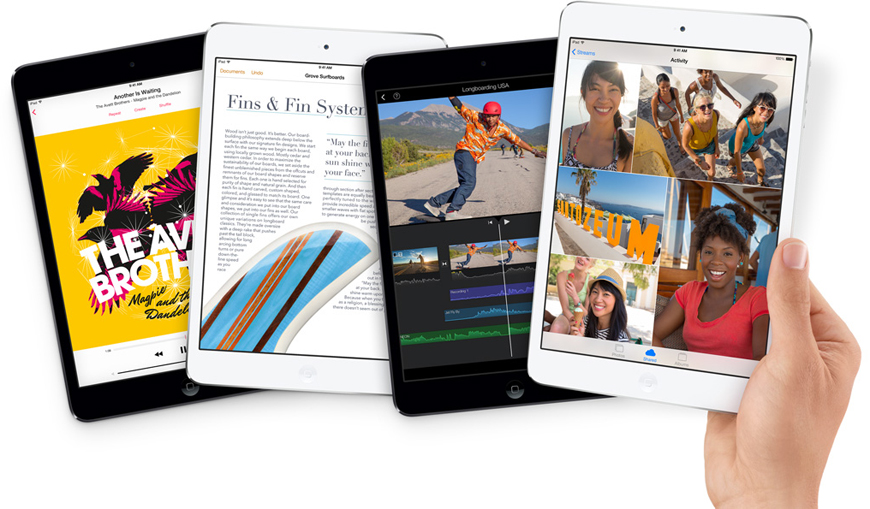When Apple first debuted the iPad back in 2010, it was a bargain. There was no basis for comparison at the time, of course, but $500 for a large portable Apple device seemed like a steal considering how expensive the company’s notebook computers were. Fast forward to 2013, however, and Android vendors now try to use price as a weapon. Very capable tablets from big vendors can be had for around $200 in the 7-inch size range, and Apple’s iPad lineup is starting to look pretty pricey. The new iPad mini with Retina display starts at $399 — nearly twice the price of Google’s Nexus 7 and Amazon’s 7-inch Kindle Fire HDX — and last year’s iPad mini starts at $299, which is still $70 more than newer tablets with far better displays. So why are Apple’s iPads so expensive?
Sometimes the simplest answer is the correct answer: Because they can be.
A recent analysis from well-respected mobile analyst Benedict Evans shows that in terms of global tablet shipments, Apple is indeed losing market share. There is an important question that not enough people stop to ask when talking tablet numbers, however: Who and what exactly is Apple losing tablet market share to?
There’s no mistaking the numbers in the chart above, which doesn’t even include Amazon tablet shipments since no data is available — Android tablet shipments are growing rapidly while the iPad’s share of the global market is declining. As Evans notes, however, there are important caveats.
First, Nexus tablet shipments (shown in orange) are basically insignificant. This is a tablet line that is both affordable and well-equipped, and sales are nonexistent. Why? Evans also wonders aloud why, when iPad sales are quite clearly being outpaced by Android tablet sales, does Apple always own the lion’s share of tablet web traffic?
Most importantly, however, is the fact that the subset of Android tablets that is growing most rapidly is the no-name tablet segment (shown in pink) being sold in and around China by white box vendors. These tablets are dirt cheap and Apple has absolutely no interest in competing with them, of course.
In fact, are they even “tablets” as we think of them today?
“Why are people buying these [white box tablets]?” Evans asks in a post on his blog. “What are they being used for? They’re mostly in China (that’s the pink bar above) and emerging markets and in lower income groups in the west. And it seems that they’re being used for a little bit of web, and a bit of free gaming. Perhaps some book reading. And a LOT of video consumption. In fact, one might argue that for many buyers, these compete with TVs, not iPads, Nexuses and Tabs. But regardless of what they’re being used for, they’re not being used the way iPads are used. In effect, they are the featurephones of tablets.”
From that perspective, Evans notes that the iPad’s $300 entry point isn’t a competitive problem at all since “the iPad doesn’t yet face a strong competitive threat.” Instead, there may in fact be two very different markets: “The post-PC vision, where Apple is dominant, and a ultra-low margin product that’s also called a tablet but which is really a totally different product.”




